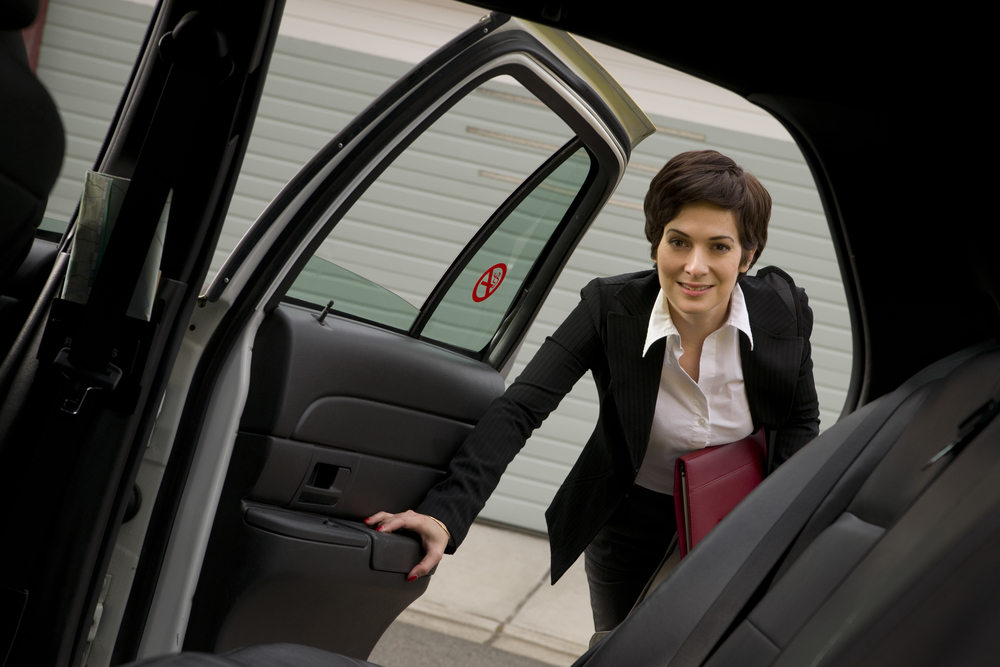I don’t normally write public service announcements, but in this case, I’m writing one. I feel like all of you who subscribe to my blog are my family, and I care. I want you to be safe. Please pass this on to everyone you know.
Last week, the news was abuzz with a big story about a female Uber passenger who was sexually assaulted by a “fake” Uber driver. Apparently hers was not the only such incident involving fake Uber and Lyft drivers. I urge you to watch the video here.
I’m a huge, huge proponent of using rideshare companies to get around in large cities, so this news got my attention. I decided to do a little research.
There are several components to this story. First, how can we protect ourselves from fake Uber and Lyft drivers, since they drive regular, not-easily-identifiable cars like cabs? Second, how safe are legit Uber and Lyft drivers? And third, are traditional taxi cabs a safer option?
How to spot a fake Uber or Lyft driver
As for the fake Uber and Lyft drivers, here’s what the ridesharing companies tell us:
Fake rideshare drivers hang around busy nightclubs, restaurants, downtown areas or other public places when it’s easy to get confused about who is picking you up, because there are usually a lot of cars and people outside. Even though Uber and Lyft tell you what kind of car your driver will be in, most cars look pretty similar and in the confusion of lots of people and cars, it’s easy to not pay close attention.
The fake drivers even have Uber or Lyft stickers on their windshields, just like real drivers.
So here are the tips to keep you safe:
- Double-check your app to ensure that the model and color of the car you think is the one picking you up – is actually the one on the app.
- Double check the license plate.
- Take a quick picture of the license plate just so you have it in case you need a record.
- The most important thing to do is to NOT get into the car UNTIL you ask the driver this question, “Who are you here for?” Open the door of the car, do not get in, but lean in and ask “Who are you here for?” If the driver can’t identify your name, then do not get in. Get the license plate and call the police. If the driver does identify you by your name, then you know the driver is legit.
- Even if the driver identifies you correctly, you still want to be safe, so use the button on the Lyft and Uber apps that allow friends to track you. They’ll know where you are and when you are scheduled to arrive.
Are legit Uber and Lyft drivers safe?
All of this is good – but just how safe are legitimate Uber and Lyft drivers? And is taking an old fashioned taxi-cab a safer plan?
My research tells me the statistics aren’t clear about which method is safer – rideshare versus cabs.
Here’s what I learned. But before I tell you, it doesn’t take much searching to find out that there are assaults reported by traditional taxi companies, from their legit drivers. Ditto with legit Uber and Lyft drivers. Taxi drivers have been in the headlines just like Uber has.
So, while most rideshare and cab drivers are upstanding and safe, we want to minimize our risk against the bad ones.
How the rideshare and cab companies vet their drivers
Uber conducts a background check, going through the last seven years of an applicant’s life. It requests the full name, social security number, birth date, driver’s license number, and vehicle documentation and then screens the information to discover any convictions. If the driver is using a stolen identity, Uber has no way of knowing this. It will hire a driver as long as the given information comes up clear of DUI charges, sexual assault charges, and violent crimes.
Lyft’s background check procedures are similar, with no involvement from the police and no fingerprinting technology. Neither company sends representatives to meet potential drivers in person before hiring them, nor do they look into an applicant’s background beyond the last seven years. Regulated taxi services require their drivers to be fingerprinted, which provides a comprehensive view of criminal history and prevents imposters from being hired using false identities.
Here is what Atlantic magazine said in their article, “Are Taxis Safer than Uber?” So while taxi companies check a prospective driver’s fingerprint records against a database that theoretically includes a person’s complete criminal history in the United States, Uber background checks use a database that can only go back seven years for some information. Late last year, San Francisco District Attorney George Gascon called Uber’s background checks “completely worthless,” according to the Los Angeles Times. And several Uber and UberX drivers in the Washington, D.C., area said Uber’s background checks were hardly rigorous.
“Not really,” said an Uber black car driver in Washington, D.C., who requested anonymity because he feared retribution. “Look, the real background check is getting fingerprinted and that takes how many weeks? This one is just online. A real background check is not like this. A real background check, the government approves you and checks everything. But Uber checks kind of. They’re kind of background checks.”
Rideshare companies have always relied on their rating system to self-regulate their drivers. Cab companies are just starting to use this system, so even if a cab driver passes initial tests, there has historically been no check and balance method in place to keep tabs on them over time.
Further research tells me that the cab and limo organizations are doing everything they can to discredit rideshare companies. They even have their own website, http://www.whosdrivingyou.org. This site was set up by the cab and limo organizations for the sole purpose of discrediting ridesharing companies like Uber and Lyft.
What’s my takeaway?
Our safety is number one. Besides checking first to make sure your rideshare driver is legit and not fake, I suggest installing more than one ride app on your phone so you have options.
Cab companies now have apps where you can add your credit card so you never have to hand the driver your card or cash, and you can order your cab on the app, just like you do with rideshare companies.
When you order a ride from Uber or Lyft and you don’t like the driver’s ratings, cancel your order and use a cab. The point is, you want options.
Apps you should have are Uber and Lyft, as well as individual apps for cab companies, such as Yellow Cab, or whatever the most common cab company is in your town. You can also download an app called Flywheel, which operates like Uber and Lyft apps, but it’s for cabs.
Be smart and be safe! Here are some additional tips from USA Today College, and from KQED News.





